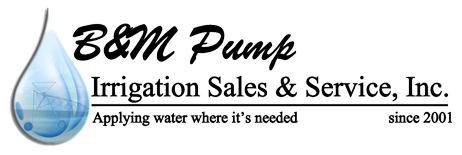Why Is Water Droplet Size Important in Irrigation?
To the layperson, all water drops are generally assumed to be basically the same size—but when you start considering farm irrigation systems, you quickly realize this is not the case. When you’re planning an irrigation system, water droplet size is one of many important elements in ensuring efficient and thorough watering. This is why smart irrigation in Texas comes in handy—it offers the ability to balance all considerations so your crops flourish. Here’s a closer look at why water droplet size is important and how it works with other watering considerations.
The role of droplet size
The size of the droplet reflects the number of gallons per minute (GPM) and water pressure in pounds per square inch (PSI). Both of these measurements help you determine whether your irrigation system is adequate and produces the right size of water droplets. The goal is to produce the largest water droplets for your soil type. This helps ensure infiltration and soil quality maintenance.
Here is a general idea of how this works. Clay soil is packed tightly, but has small particles and pores. This gives it a low infiltration rate, but a high water capacity. You need small water droplets to breach this type of soil. If you used large droplets, it would cause soil compaction, which only makes it harder to water adequately. Soil will lose valuable minerals through runoff and become nearly useless.
The size of the droplet will also come into play when deciding how long and how much to water. This is due to water loss. Larger droplets weigh more, which means they are less likely to be blown away in the wind. If your soil requires smaller droplets, you either have to make them larger to make up for a breezy day or schedule watering when the weather calms down.
Other watering considerations
Water droplets are not the be-all and end-all of irrigation. You must consider other factors, too. One is crop type. You can choose sprinklers designed for irrigating specific crops, and those will determine water application patterns and droplet size. Since you are looking at a wide variety of water requirements, it’s often a good idea to install a specialized sprinkler head for each type of crop.
We already discussed weather in terms of wind, but sunlight and temperature play into this as well. Hot days and direct sunlight evaporate water, and you will need to program irrigation systems to make up for that loss. Rain is a godsend after a dry summer, but it may not rain long enough to cover all of your crops. Also, heavy rains will lead to soil runoff, which can strip it of minerals.
Finally, you will need to design a system that allows for uniformity. Sprinkler spacing should not be too close or too far apart. Otherwise, you risk water accumulation and puddles. You may also produce inadequate coverage, which can lead to lost crops. Like other factors, wind and weather can affect uniformity, and you may have to program sprinklers to produce larger drops.
B&M Pump Irrigation Sales & Service, Inc. sells and designs farm irrigation systems in Texas. Contact us today if you wish to upgrade to smart irrigation or simply have questions about how to get the most out of your current system.
Categorised in: Irrigation
